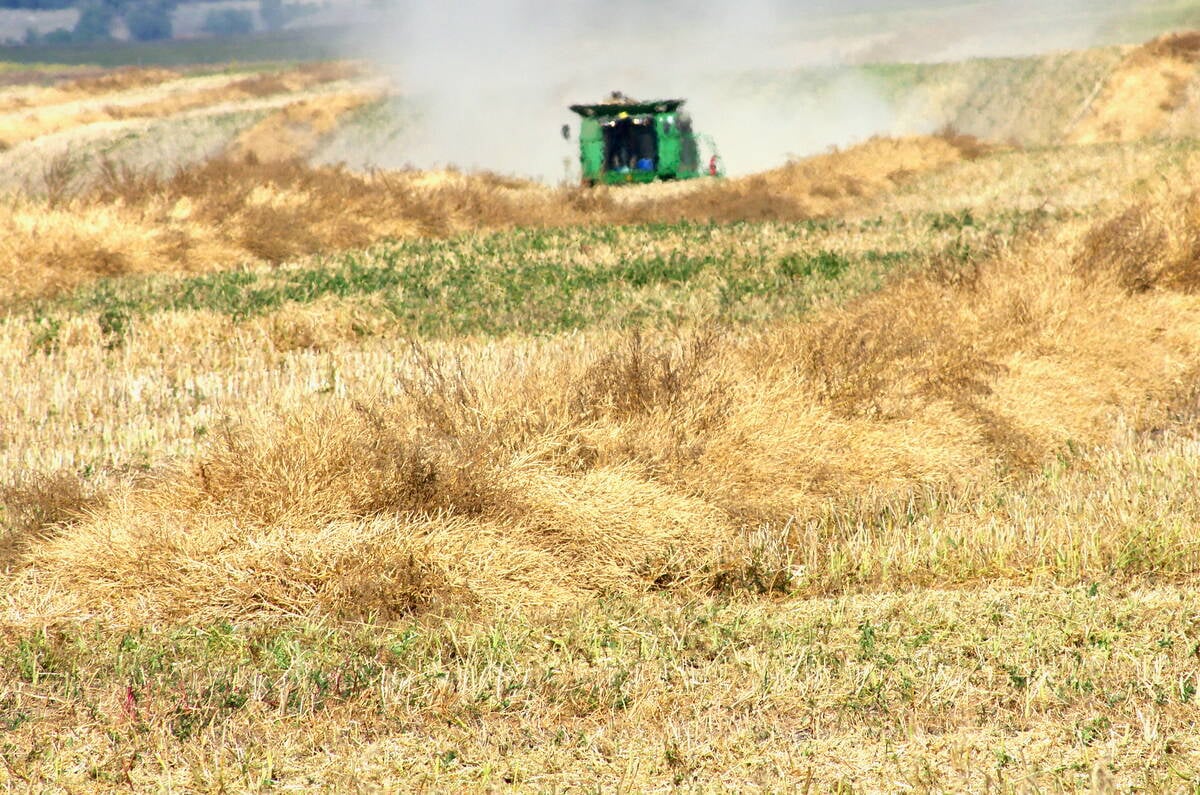Big shipments of prairie flax are sailing for China, a country that rarely buys the crop.
That has many speculating that China has become the backdoor route for Canadian flax oil to get into the closed European market.
“You’ve got to assume something’s going on, but no one knows,” said Lach Coburn, Cargill’s export terminal manager in Vancouver.
“The volumes are substantial, going from nothing to 15,000, 16,000 tonne flax shipments.”
Many around the industry wonder if Chinese buyers are crushing the seed, keeping the meal and selling the oil to European buyers.
Read Also

Manitoba searches for Plan B on canola oil exports
A new report explores Manitoba’s current canola oil trade and possible alternative markets to the U.S.
According to the Canadian Grain Commission, between August and January China imported 98,000 tonnes of flax, after importing none in that period the year before.
Over the same period, Canadian flax exports to Europe dropped by about 109,000 tonnes.
Until now, China has seldom bought Canadian flax, and never in large amounts.
Canadian flax is shut out of the European Union because trace amounts of Triffid , a genetically modified variety not approved in the EU, have been found in many Canadian seed stocks.
However, flax oil is free to enter the EU, regardless of whether it comes from GM-tainted seeds.
Unfortunately for prairie flax growers, Canada’s crushing plants seldom crush flax.
“We do crush flax from time to time, but the margins aren’t the same and you use the same plant for flax and canola,” said Barry Hall, president of the Flax Council of Canada.
Flax crushing’s poorer margins appear to be the result of the low demand for industrial linseed oil in North America. Canola crush margins are better because of the strong demand for canola oil for human consumption.
However, Europe has strong markets for all componets of flax: seed, industrial linseed oil and meal. Many European countries include flax meal and seed in their cuisine. Major linoleum manufacturers and paint and industrial oil industries use the oil. The meal is used by the Belgian dairy industry.
These many uses make flax crushing a more profitable business in Western Europe.
North American crushers find it less attractive because flax meal is only medium-priced feed here and the oil’s value is lessened because of lack of uses.
“It’s a very cheap commodity,” said Terry Popowich of Yorkton’s TA Foods, a company that produces and exports flax products including oil.
The biggest value component for the Europeans is the meal.
“The oil is a byproduct for them (European crushers).”
Europeans sometimes end up with a surplus of oil from flax crushing and feed quality linseed oil often gets shipped back to North America, Popowich said. That removes the incentive to swap out canola for flax in major crushing plants.
“We can’t compete against those cheap imports,” he said.
However, his company has occasionally exported small amounts of flax meal and kept the oil here for the tiny human consumption market.
“We have shipped over the meal and kept the oil here,” said Popowich. “That’s what they’re looking for.”
Dave Hickling, a canola meal specialist with the Canola Council of Canada, said high quality, human grade flax oil has extremely low levels of unsaturated fat and therefore spoils quickly.
This poor shelf life may be another factor holding back exports of high-value flax oil.
Coburn said export liquid tank capacity is low, and canola dominates the trade.
That leaves flax stocks in North America high and sales to China as the one bright spot in the industry right now.















